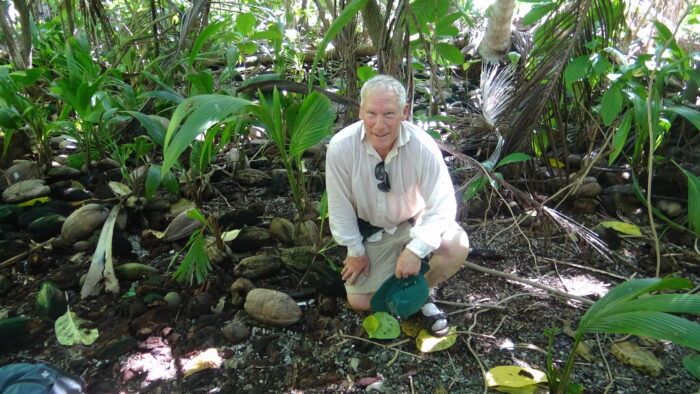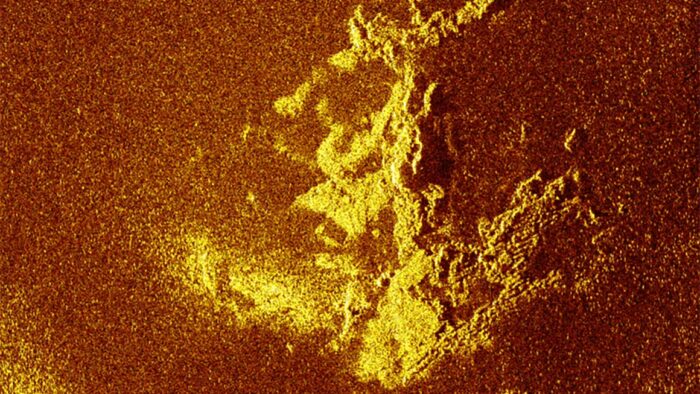A team of scientists who want to search for Amelia Earhart’s missing plane has announced a delay until 2026. The search was originally slated to start this week but has been postponed due to a combination of permit delays and the approaching South Pacific cyclone season.
The expedition was sparked by satellite images that showed a mysterious object near Nikumaroro Island, about 3,000km southwest of Hawaii and 600km southeast of Howland Island, the destination Earhart and navigator Fred Noonan were believed to be headed for but never reached.
Researchers from the Archaeological Legacy Institute (ALI) have dubbed the find the Taraia Object — an anomaly within the island’s central lagoon that appears to match the size and shape of Earhart’s Lockheed Model 10E Electra aircraft.
The unidentified object first appeared in 2015 satellite images taken shortly after a cyclone, and scientists believe the storm may have uncovered wreckage long hidden beneath sediment.

Map: tighar.org
The disappearance of Amelia Earhart
Earhart and Noonan vanished on July 2, 1937, while flying from Papua New Guinea towards Howland Island. Despite extensive searches, no confirmed trace of the aircraft was ever found. The U.S. Navy initially reckoned that the plane likely ran out of fuel and crashed into the Pacific Ocean near Howland.

Satellite image of Nikumaroro. Photo: archaeologychannel.org
Since then, numerous theories have emerged. One popular theory is that Earhart landed on or near Nikumaroro, then known as Gardner Island, and survived for a time before the aircraft was swept into the sea.
The new lead
Archaeologist Dr. Richard Pettigrew is leading the Taraia Project, supported by Purdue University. Pettigrew was alerted to the anomaly in 2020 after independent researcher Michael Ashmore spotted an aircraft-like shape in Apple Maps imagery.

The Taraia Object satellite image. Photo: archaeologychannel.org
Later analysis of satellite data from 2009 to 2024 revealed that the object has remained consistent in form and size. The Taraia Object measures roughly 12 to 14m long, similar to the Electra’s 12.2m fuselage.
Boots on the ground
Only manpower on the ground can determine whether the mysterious object is part of an aircraft. To do this, the research team will use drone mapping, sonar, underwater cameras, and metal detectors to document the site. If results are promising, they may try to excavate and recover whatever they find.

Dr. Rick Pettigrew on Nikumaroro in 2017. Photo: archaeologychannel.org
Earlier searches unsuccessful
The Taraia Project follows decades of searches for Earhart’s plane. Deep-sea sonar searches near Howland Island in the 2000s and 2010s found no trace.
On Nikumaroro itself, skeletal remains were discovered in 1940, along with a sextant box and fragments of shoes. The bones were initially analyzed in Fiji and described as belonging to a “short, stocky male.”

Sonar imagery captured in 2024 by Deep Sea Vision shows a rock formation once thought to be the possible wreckage of Earhart’s plane. Photo: Deep Sea Vision
In 2018, forensic anthropologist Richard Jantz reexamined those measurements using modern techniques and concluded they more closely matched Earhart’s known proportions than 99% of reference samples. However, the original bones were lost, making DNA testing impossible.
More recently, a private company, Deep Sea Vision, announced in early 2024 that it had located an aircraft-shaped object on the seafloor near Howland Island using sonar. It turned out to be a rock formation instead.
Isolated and protected
Nikumaroro’s isolation and strict environmental protections have long complicated fieldwork. The island is uninhabited and surrounded by dangerous reefs that make landing by boat difficult, while securing research permits from the Kiribati government has delayed multiple expeditions, including this latest one.






